Queen Zenobia was a third-century ruler of the Palmyrene Empire, which was centered in present-day Syria. She rose to power after the death of her husband, King Odaenathus, who had established Palmyra as a regional power. Zenobia expanded the empire during her reign from 267 to 272 AD, conquering Egypt and parts of the Eastern Roman Empire, including Anatolia, Palestine, and Lebanon.
There’s actually a whole lot more to her story than meets the eye.
Table of Contents
Who Was Queen Zenobia?
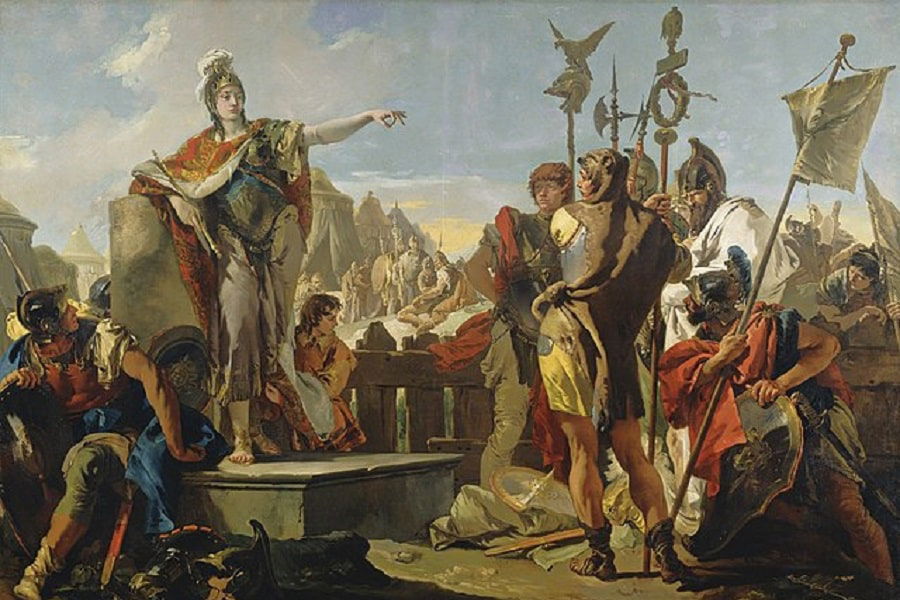
Queen Zenobia stands as a remarkable figure in ancient history, known for her intelligence, bravery, military prowess, and diplomatic skill. As the queen of the Palmyrene Empire in Syria, she expanded her territory, fostered cultural growth, and defended her people against the mighty Roman Empire. In modern times, Zenobia has become a symbol of national pride in Syria and a source of inspiration in various forms of art and literature.
Early Life and Background
Queen Zenobia, born around 240 AD, was of Aramean and Arab heritage. Her father, Amr ibn Zarib, was a prominent Palmyrene nobleman, while her mother reportedly descended from the ancient Egyptian queen Cleopatra VII. Zenobia’s name, which means “power of Zeus” in the Palmyrene dialect, reflects her family’s commitment to the Greco-Roman pantheon.
READ MORE: The Queens of Egypt: Ancient Egyptian Queens in Order
Growing up in the thriving city of Palmyra, Zenobia was exposed to a diverse range of cultures and languages. She received an excellent education, becoming fluent in multiple languages, including Palmyrene, Greek, Latin, and Egyptian. This linguistic prowess would serve her well in her future political and military endeavors, as well as in her cultural patronage.
The city of Palmyra itself was a significant crossroads for trade and culture, which would have enabled Zenobia to develop an appreciation for the many different peoples that inhabited the ancient world. Additionally, her mixed heritage would have given her a unique perspective on the various cultural and political factors that shaped the region.
Marriage and Ascension to Power
Zenobia married Odaenathus, the ruler of Palmyra, who successfully defended the Eastern Roman Empire against the Persians and was recognized as a Roman governor. After Odaenathus’ assassination in 267 AD and his fall as a Roman governor, Zenobia became regent for her young son, Vaballathus. She held de facto power during his reign and used it to strengthen and expand the Palmyrene Empire.
In addition to her role as a regent, Zenobia also might’ve played an important part in the military and diplomatic affairs of the empire. Her strategic thinking, combined with her courage and charisma, allowed her to navigate the complex political landscape of the time, positioning her empire as a force to be reckoned with in the region. She built alliances with neighboring powers, further enhancing her influence and the stability of her realm.
It goes without saying, her rule was characterized by a strong sense of justice and fairness, which endeared her to her subjects and helped to maintain the loyalty of the diverse peoples within her empire. This would prove essential in her efforts to resist Roman aggression and expand her territory.
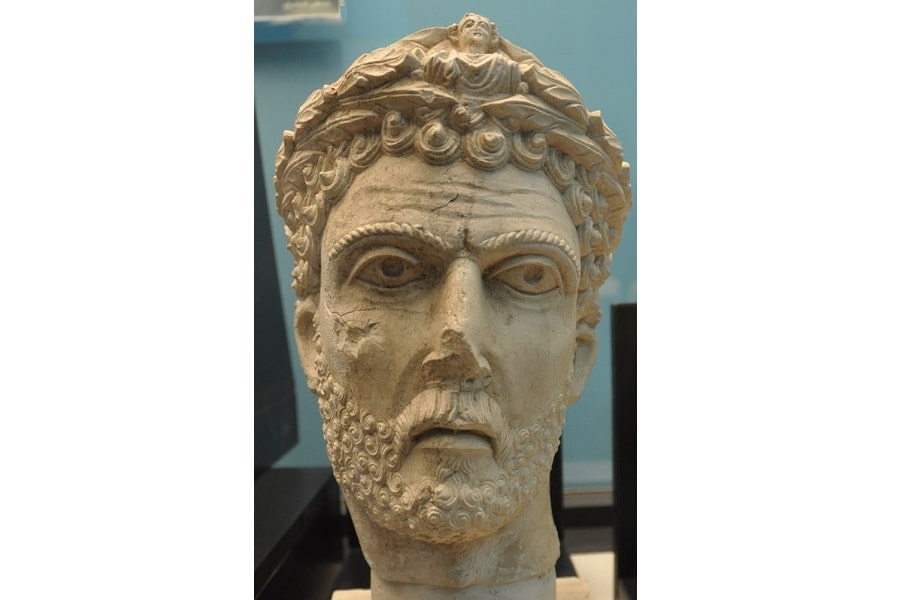
Why Was Queen Zenobia Known as Warrior Queen?
The flashy empress’ feats as a warrior queen were remarkable. Her campaigns across the frontiers of her empire solidified her position as a veteran leader.
READ MORE: Warrior Women from Around the World: History and Myth
Invasion of Egypt
One of Zenobia’s most notable military campaigns was the invasion of Egypt in 269 AD. Aiming to secure valuable trade routes and assert her power, Zenobia’s forces, led by the skilled Palmyrene general Septimius Zabdas, conquered the Egyptian province, expelled the Roman prefect, and established Palmyrene rule. According to legend, Zenobia personally led her army on horseback and displayed exceptional strength and courage throughout the campaign.
Background and Motivation
The invasion of Egypt in 269 AD was driven by several factors, including Zenobia’s ambition to expand her empire, secure valuable trade routes, and assert her authority in the region. Egypt was a crucial province for the Roman Empire, not only for its agricultural wealth but also as a gateway to the East. By targeting Egypt, Zenobia aimed to weaken Rome‘s influence and establish Palmyra as a dominant power in the region.
Preparations and Alliances
Zenobia carefully prepared for the invasion of Egypt, gathering intelligence on the Roman defenses and making strategic alliances with neighboring powers. She sought to strengthen her relationship with the Persian Empire, which shared a common interest in countering Roman hegemony in the region. This alliance provided Zenobia with additional military support and resources, enabling her to mount a strong offensive against Egypt.
The Invasion
Zenobia engaged in negotiations with Timagenes, an Egyptian military leader who was ready to assist in overthrowing the Roman authority in Egypt and transferring the region’s control to Palmyra. Consequently, Zenobia sent Zabdas to collaborate with Timagenes.
In 270 CE, Zenobia’s forces, which comprised nearly 80,000 Egyptians, Palmyrenes, and foreign mercenaries, launched an attack, and Egypt was conquered. After stationing a garrison of soldiers in Alexandria, Zabdas seemingly tried to unite with Zenobia’s troops further north. However, Egypt experienced a period of upheaval.
READ MORE: The Lighthouse of Alexandria: One of the Seven Wonders
Tenagino Probus, an ambitious Roman prefect, initiated a counteroffensive from the sea and forced Zenobia’s garrison out. When Zabdas returned to Egypt, he discovered that Probus had assembled an army of Egyptians and Africans to resist him. Zabdas was defeated and expelled from Egypt, and Probus pursued him. Nonetheless, due to a clever plan devised by Timagenes, the Palmyran forces and Zabdas triumphed over the Roman-backed troops and regained control of Egypt.
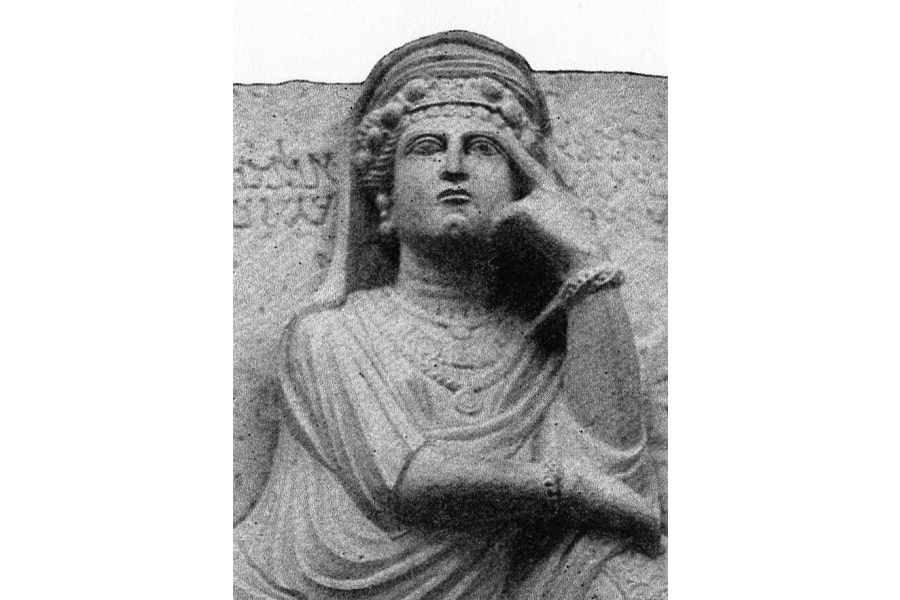
Key Battles and Sieges
Under the leadership of Zabdas, Zenobia’s forces swiftly captured key cities and strategic locations in Egypt, including the coastal city of Pelusium and the Nile Delta. They then laid siege to the provincial capital, Alexandria, a vital port and one of the largest cities in the ancient world. After a prolonged siege, Zenobia’s forces breached the city’s defenses, and Alexandria fell to the invading army.
Establishing Palmyrene Rule in Egypt
Following the successful invasion, Zenobia expelled the Roman prefect, Tenagino Probus, and established Palmyrene rule over Egypt. She appointed her loyal Palmyrene noble and military commander, Septimius Zabdas, as the new governor of Egypt, ensuring that her authority was firmly established in the province.
Zabdas played a pivotal role in Zenobia’s invasion of Egypt as one of her most trusted military commanders. His experience in warfare and strategic acumen made him an invaluable asset to Zenobia’s forces, helping her achieve numerous victories throughout the campaign. As the new governor of Egypt, Zabdas was responsible for ensuring that the local population remained loyal to Zenobia as well as managing the economic and political affairs of the province.
The invasion of Egypt was not only a significant military achievement but also a symbolic one. By conquering a territory that had been under Roman control for centuries, Zenobia demonstrated her empire’s strength and independence. This bold move caught the attention of the Roman Empire, which would eventually lead to a confrontation between the two powers.
Her success in Egypt also allowed Zenobia to consolidate her power and solidify her position as a ruler in her own right rather than merely a regent for her son. Her military victories, achieved in large part due to the strategic leadership of Zabdas, served as a testament to her skill as a commander and her ability to inspire her troops.
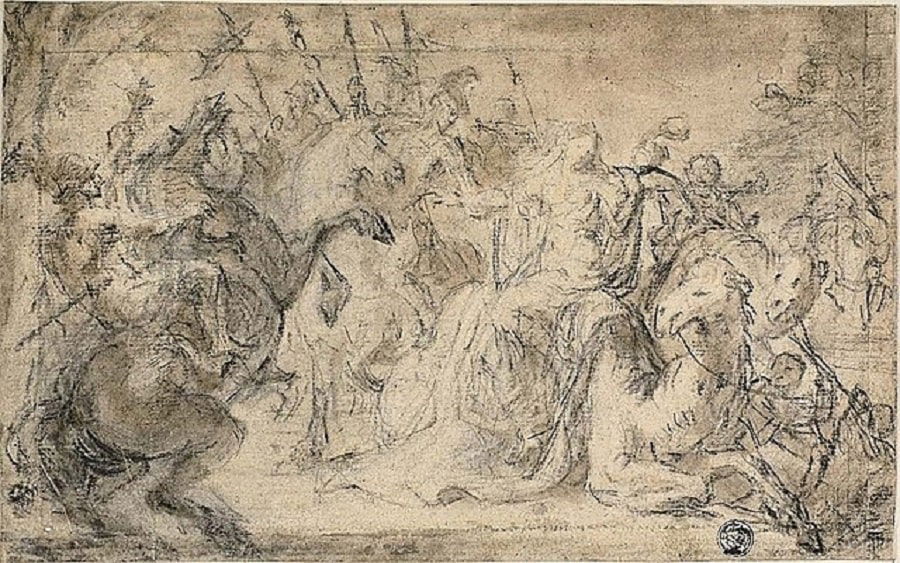
Expansion of the Palmyrene Empire: A Detailed Overview
Territorial Expansion
Buoyed by her military triumphs, Zenobia declared her independence from Rome in 270 AD and assumed the title of Augusta, or Empress. She intended to rival Rome by founding a new empire with Palmyra as its capital. The Palmyrene Empire, also referred to as the Queen’s Empire, included what are now Syria and Lebanon, Egypt, and parts of Anatolia. Under Zenobia’s rule, the Palmyrene Empire expanded rapidly, annexing territories in Asia Minor and the Levant. This expansion served to assert Palmyra’s independence from Rome and demonstrate its growing power in the region.
Conquest of Anatolia (modern-day Turkey)
Zenobia targeted the Roman cities of Ancyra (present-day Ankara) and Tyana in her expansion into Asia Minor. The city of Ancyra was an important political and economic center in the region, and capturing it allowed Zenobia to exert her influence over Roman territories in Asia Minor.
Zabdas led the Palmyrene forces in a well-planned campaign against Ancyra. The city was heavily fortified, but the Palmyrene forces, using their expert siege tactics, managed to breach the city walls after several weeks of fighting. The capture of Ancyra was a significant blow to the Romans and further emboldened Zenobia in her expansionist ambitions.
Following the capture of Ancyra, Zabdas led the Palmyrene forces south to the city of Tyana. Tyana was strategically located along a major trade route, and its capture would provide Zenobia with control over the flow of goods between the East and the West. The conquest of Tyana was achieved through a combination of diplomacy and military force, with Zenobia securing the loyalty of the local populace and the city’s surrender without a prolonged siege.
Expansion into the Levant (modern-day Syria, Lebanon, Israel, and Palestine)
Zenobia’s expansion into the Levant was driven by her desire to consolidate her regional power and weaken Roman influence. Her forces, led by Zabdas, launched a series of campaigns that resulted in the capture of several important cities:
Antioch: As one of the largest and most important cities in the eastern Mediterranean, Antioch’s capture was a major achievement for Zenobia. The city had strong defenses and a sizable Roman garrison, but Zabdas’s well-executed siege tactics and Zenobia’s diplomatic efforts with the local elites enabled the Palmyrene forces to capture the city with minimal resistance.
Emesa (present-day Homs): Emesa was a prosperous city and a religious center, with a significant Roman presence. The Palmyrene forces, again under Zabdas’s leadership, launched a surprise attack on the city, catching the Roman defenders off guard. After a brief but intense battle, Emesa fell to Zenobia’s forces, who were welcomed by the local population as liberators.
Bostra: The capture of Bostra was a critical moment in Zenobia’s expansion into the Levant. The city was a Roman military stronghold and controlled vital trade routes in the region. The Palmyrene forces, utilizing their superior mobility and knowledge of the terrain, outmaneuvered the Roman defenders and launched a daring assault on the city. After several days of fierce fighting, Bostra fell to Zenobia’s forces, cementing her control over the Levant and sending a clear message to Rome about her growing power.
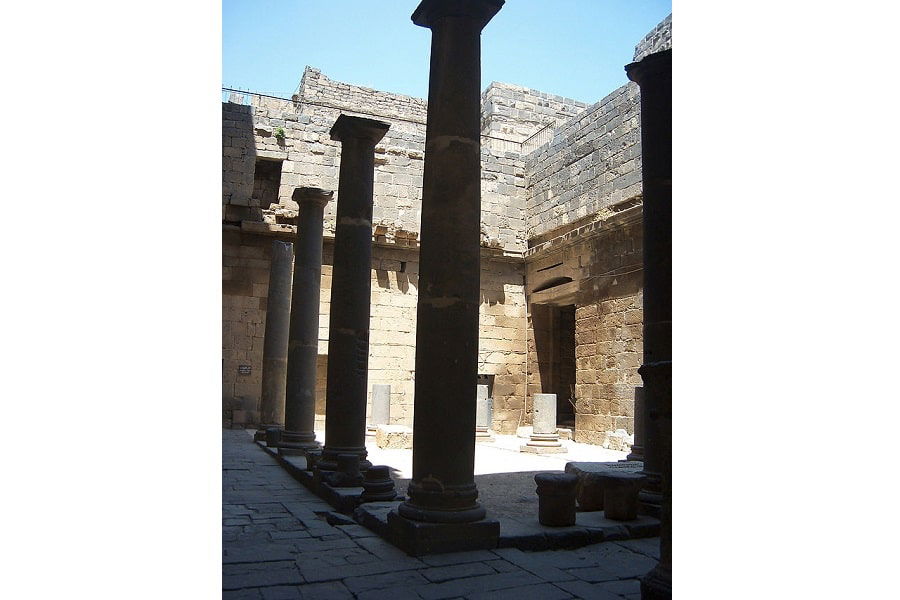
Administration and Governance
As her empire grew, Zenobia needed to establish a system of administration and governance that could effectively manage the diverse regions under her control.
She relied on a combination of local elites and Palmyrene nobility to govern the territories, ensuring that her authority was maintained while respecting the traditions and cultures of the various peoples within her empire. In each conquered city, Zenobia established a local administration headed by a Palmyrene governor, often with the support of the existing local elites who had pledged loyalty to her.
The administration of Queen Zenobia was centered on consolidating authority, upholding law and order, and advancing the goals of the Palmyrene Empire. The stability and prosperity of her empire were attributed to her centralized control, effective administrative structure, legal system, taxing policy, military management, infrastructure development, and diplomatic activities. Zenobia’s managerial prowess and leadership skills greatly aided Palmyra’s rise to prominence as an autonomous and significant power in the ancient world.
READ MORE: Ancient Civilizations Timeline: The Complete List from Aboriginals to Incans
Economic Growth and Trade
The expansion of the Palmyrene Empire under Zenobia led to an increase in trade and economic prosperity. Palmyra’s strategic location at the crossroads of major trade routes between the East and the West allowed it to benefit from the flow of goods and resources. By controlling key trade routes, such as the ones passing through Egypt and Anatolia, Zenobia was able to generate significant wealth and resources for her empire.
In Anatolia, the capture of Ancyra and Tyana allowed Zenobia to control the flow of goods between Asia Minor and the Mediterranean. In the Levant, the conquest of Antioch, Emesa, and Bostra enabled her to dominate the trade routes connecting the eastern Mediterranean with Mesopotamia and the Arabian Peninsula.
As was customary for rulers of the time, Zenobia had coins minted bearing her image and inscriptions. These coins served as currency and a means of disseminating her authority and establishing her legitimacy as a sovereign.
The coins of Zenobia typically featured her portrait on the obverse, often depicted wearing a diadem or a crown. These images portray her as a strong and regal figure, emphasizing her authority as a ruler. The reverse of the coins usually displayed various symbols and inscriptions related to the empire, such as military victories or religious imagery.
Zenobia issued gold and silver coins during her reign, reflecting her empire’s economic prosperity. Interestingly, while her coinage followed Roman conventions in design and style, Zenobia’s coins often included inscriptions in Greek and Palmyrene, highlighting her empire’s unique cultural and linguistic identity.
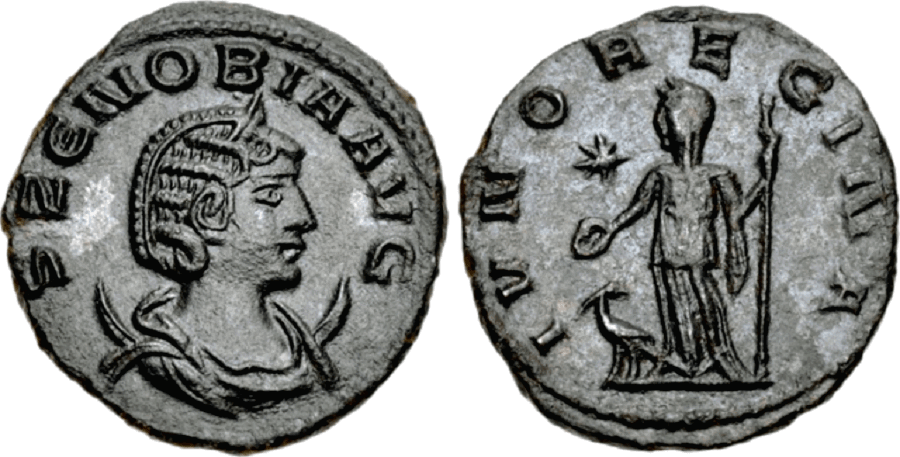
Cultural Exchange and Integration
The Palmyrene Empire’s expansion resulted in a rich cultural exchange between the various regions and peoples under Zenobia’s rule. The diverse population of the empire contributed to a vibrant and cosmopolitan society, where various languages, religions, and customs coexisted and intermingled. This cultural integration allowed Zenobia’s empire to flourish and become a center of learning and artistic expression, further enhancing its reputation and prestige in the ancient world.
Patronage of the Arts and Intellectual Pursuits
Not only was Zenobia a warrior queen, but she also fostered intellectual growth in her court, supporting local artists and encouraging the study of philosophy and history. She was known to be a patron of the philosopher Cassius Longinus, who lived in Palmyra during her reign. Under her guidance, the city of Palmyra became a thriving center of culture and learning, attracting scholars and artists from across the ancient world.
READ MORE: History’s Most Famous Philosophers: Socrates, Plato, Aristotle, and More!
Zenobia’s support of the arts and learning contributed to the vibrant cultural life of her empire. The city of Palmyra, in particular, was home to numerous temples, public buildings, and monuments, many of which were constructed or renovated during her reign. The architectural and artistic achievements of the Palmyrene Empire remain a testament to Zenobia’s commitment to the cultural development of her people.
She also fostered a sense of cultural unity within her empire, promoting the use of the Palmyrene dialect and encouraging the development of a distinctive Palmyrene artistic style. This dedication to the preservation and promotion of her people’s culture served to further strengthen her empire and cement her legacy as a wise and benevolent ruler.
Tolerance and Multiculturalism
Zenobia displayed remarkable tolerance towards her subjects, protecting religious minorities such as Jews and Christians. Her stable governance over a multicultural and multiethnic empire reflected her ability to maintain unity among her diverse subjects. As a result, the Palmyrene Empire remained relatively peaceful and prosperous during her reign.
In addition to her religious tolerance, Zenobia also promoted multiculturalism and the exchange of ideas within her empire. By fostering an environment in which people of different backgrounds could live and work together harmoniously, she contributed to the empire’s overall stability and success.
Her commitment to religious and cultural tolerance has been cited as a key factor in her ability to maintain control over such a vast and diverse territory. This approach to governance stands in stark contrast to the often brutal methods employed by Roman Emperors and other rulers of the time, further highlighting Zenobia’s unique qualities as a leader.
Downfall
In 272 AD, tensions between the Palmyrene Empire and Rome escalated, leading to a confrontation between the two powers. The Roman Emperor Aurelian launched a campaign against Palmyra in response to Zenobia’s secession and territorial expansion. Zabdas played a key role in preparing for the inevitable conflict, assessing the strength of the Roman army, devising strategies to counter their tactics, and organizing and training Zenobia’s troops.

Aurelian’s Advance Towards Ankara
In 272, Aurelian led his Roman army across the Bosporus and marched eastward, reaching Ankara in the province’s heart with minimal resistance. Zenobia strategically retreated to the Orontes River, situated between Emesa and Antioch, leaving no forces in Ankara.
Battle at Antioch
Upon defeating the small Palmyran force at Tyana, Aurelian attacked Zenobia’s army at Antioch. Under the effective command of her accomplished general, Zabdas, the Palmyran forces consisted of infantry, renowned archers, and heavily armored horsemen. In contrast, Aurelian’s army relied on disciplined Roman infantry, Gallic legions, imperial soldiers, and light horsemen from Moorish and Dalmatian regions. The two forces appeared evenly matched.
During the battle, Aurelian’s light horsemen strategically retreated from Zenobia’s charging heavy cavalry, harassing them simultaneously. As the Palmyran cavalry’s formation broke down, the Romans successfully counterattacked. Aurelian’s infantry advanced across the Orontes River, forcing the Palmyran left flank to retreat. Zenobia and Zabdas withdrew through Antioch and regrouped at Emesa.
Zenobia’s Declining Fortunes
As Zenobia’s political and military status weakened, Egypt, torn between Palmyra and Rome, pledged its allegiance to Aurelian. Her appeals for help from Shapur I of Persia were ignored, while troops loyal to Rome from Mesopotamia, Phoenicia, Syria, and Palestine strengthened Aurelian’s forces.
Final Battle at Emesa
In 272, Zenobia’s last large-scale battle occurred before Emesa, with her army of 70,000 facing the Romans. Despite initial success against Aurelian’s light horsemen, the Palmyran heavy cavalry succumbed to a coordinated infantry assault that exploited a gap in their lines. This Roman victory led to a decisive defeat for Zenobia, who fled to Palmyra.
The Capture of Zenobia and Surrender of Palmyra
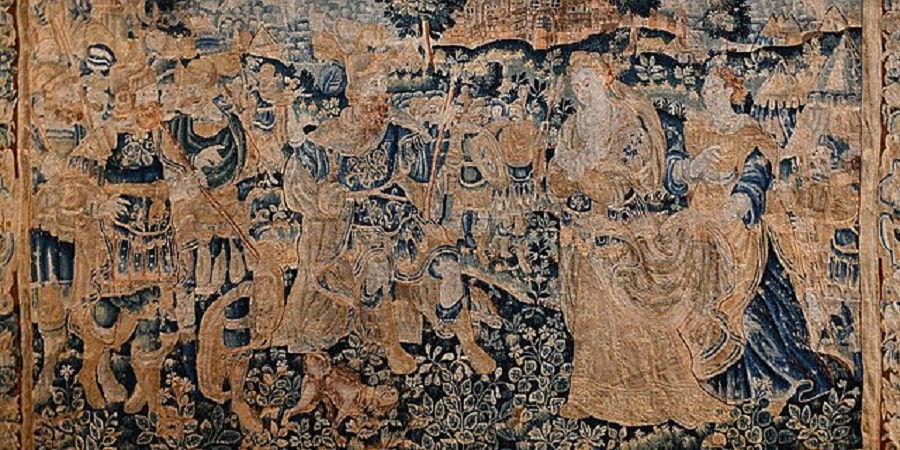
As Aurelian’s forces besieged Palmyra, Zenobia attempted a daring escape on a fast camel to seek assistance from the Persians. However, Roman cavalry captured her near the Euphrates River, and she was brought before Aurelian at Emesa. With their queen captured, the Palmyrenes surrendered, and Palmyra was spared.
After the capture of Palmyra, the Romans initially spared the city. But when rumors of a rebellion began to brew, Aurelian systematically destroyed much of the city, including its magnificent temples and palaces, as a warning to other potential challengers to Roman authority in the region. The empire of Palmyra was reduced to mere huts and a village, disappearing from history books in that period due to its insignificance.
How Did Zenobia Die?
After Zenobia’s capture, the fate of the Palmyrene queen became shrouded in mystery, with various accounts describing her subsequent experiences. According to some sources, Aurelian spared Zenobia’s life and brought her to Rome, where she was paraded in chains during his triumphal procession. She was adorned with heavy golden chains, perhaps as a mockery of the wealth she had once owned.
Intriguingly, other accounts suggest that Aurelian treated Zenobia with respect after her capture, owing to her courage and determination. It is said that Aurelian eventually granted her clemency, allowing her and her son to live out the rest of their lives in comfort and luxury. Some stories even claim that she married a Roman nobleman and became a prominent social figure in Rome, enjoying a peaceful existence.
Another version of Zenobia’s fate claims that she took her own life rather than submit to Roman humiliation. According to this narrative, she poisoned herself shortly after her capture, choosing to die with dignity instead of being showcased as a trophy in Rome.
Accounts by Historians
Several historians and writers from the ancient world have mentioned Queen Zenobia in their works, providing valuable insights into her life, reign, and the Palmyrene Empire. Some notable mentions of Zenobia by ancient historians include:
1. Cassius Dio (c. 155 – c. 235 AD): A Roman historian who wrote about Queen Zenobia in his work, “Roman History.” He described her intelligence, beauty, military campaigns, and conflicts with the Roman Empire.
2. Zosimus (5th century AD): A Greek historian who also discussed Zenobia’s life and reign in his work, “New History.” Zosimus provides details about Zenobia’s expansionist ambitions, her battles against Rome, and her ultimate defeat by Emperor Aurelian.
3. Historia Augusta (4th century AD): Historia Augusta is a collection of biographies of Roman emperors that contains information about the life of Aurelian and his campaigns against Queen Zenobia. The work highlights Zenobia’s courage, determination, and final capture by the Romans.
4. Aurelius Victor (4th century AD): A Roman historian and author of “De Caesaribus,” which includes a brief account of Zenobia’s rule, her revolt against Rome, and her eventual defeat by Aurelian.
5. Al-Tabari (839 – 923 AD): An influential Persian historian who wrote about Zenobia in his work, “History of the Prophets and Kings.” Although written much later than the other sources, Al-Tabari’s account provides an Islamic perspective on Zenobia’s life and the Palmyrene Empire.
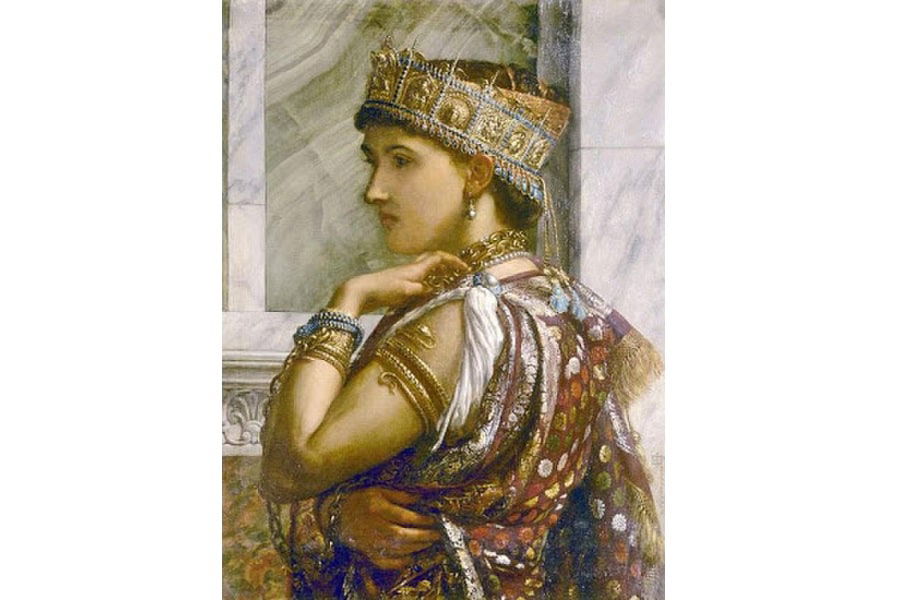
Zenobia’s Influence on Women in Warfare
Zenobia’s reign as a warrior queen serves as an early example of a powerful and influential woman in the predominantly male-dominated field of warfare. Her success in diplomacy and military strategy demonstrates that women could lead armies and nations, defying the traditional gender roles of the time.
Throughout history, other examples of warrior queens and female military leaders have been inspired by or compared to Zenobia. These women, like Zenobia, challenged societal norms and proved that women could be just as effective and formidable in warfare as men.
Zenobia in Popular Culture
Zenobia’s story has captivated the creative brains of writers, artists, and filmmakers for centuries. Her tale of defiance against the Roman Empire and her rise to power as a warrior queen have inspired numerous works of fiction and non-fiction, making her a popular figure in both historical and fictional accounts.
In literature, Zenobia has been portrayed in various works, including the 18th-century novel “Zenobia, Queen of Palmyra” by William Ware and the 19th-century play “Zenobia” by Arthur Murphy. In more recent times, she has appeared in novels such as “The Memoirs of Cleopatra” by Margaret George and “Empress of the East: How a European Slave Girl Became Queen of the Ottoman Empire” by Leslie Peirce.
In film and television, Zenobia has been depicted in historical dramas and documentaries, such as the 1963 Italian film “Queen of the Seas” and the 2008 docudrama “Warrior Queen Boudica.” Her story has also served as inspiration for various video games, including the strategy game “Europa Universalis: Rome” and the mobile game “Rise of Kingdoms.”
Conclusion
Zenobia’s reign as a warrior queen represents a remarkable chapter in the history of the ancient world. Her military prowess, diplomatic skill, and sheer determination allowed her to carve out an empire from the Roman-dominated landscape, leaving a lasting impact on the region and beyond.
Her legacy as a powerful and influential female leader in a time when women were often relegated to the sidelines serves as an inspiration for generations of women to come. Zenobia’s story, both as a warrior queen and as a symbol of female strength, continues to captivate and inspire, illustrating her enduring significance in history and popular culture.
References
Andrade, Nathanael J. (2018). Zenobia: Shooting Star of Palmyra. Oxford University Press.
Bryce, Trevor (2014). Ancient Syria: A Three Thousand Year History. Oxford University Press.
Cussini, Eleonora (2005). “Beyond the spindle: Investigating the role of Palmyrene women”. In Cussini, Eleonora (ed.). A Journey to Palmyra: Collected Essays to Remember Delbert R. Hillers. Brill.
Dignas, Beate; Winter, Engelbert (2007). Rome and Persia in Late Antiquity: Neighbours and Rivals. Cambridge University Press.
Downey, Glanville (2015) [1961]. History of Antioch. Princeton University Press.
Duruy, Victor (1883) [1855]. “II”. History of Rome and of the Roman people, from its origin to the Invasion of the Barbarians. Vol. VII. Translated by C.F. Jewett Publishing Company. Jewett.
Drinkwater, John (2005). “Maximinus to Diocletian and the ‘crisis'”. In Bowman, Alan K.; Garnsey, Peter; Cameron, Averil (eds.). The Crisis of Empire, AD 193–337. The Cambridge Ancient History. Vol. 12. Cambridge University Press.
Kelly, Sarah E. (2004). “Zenobia, Queen of Palmyra”. In Pearson, Gail A. (ed.). Notable Acquisitions at the Art Institute of Chicago. Vol. 2. University of Illinois Press.
Millar, Firgus (1971). “Paul of Samosata, Zenobia and Aurelian: the Church, Local Culture and Political Allegiance in Third-Century Syria”. Journal of Roman Studies. The Society for the Promotion of Roman Studies.
Nakamura, Byron (1993). “Palmyra and the Roman East”. Greek, Roman, and Byzantine Studies. Duke University, Department of Classical Studies.
Stoneman, Richard (2003) [1992]. Palmyra and Its Empire: Zenobia’s Revolt Against Rome. University of Michigan Press.
Smith II, Andrew M. (2013). Roman Palmyra: Identity, Community, and State Formation. Oxford University Press.